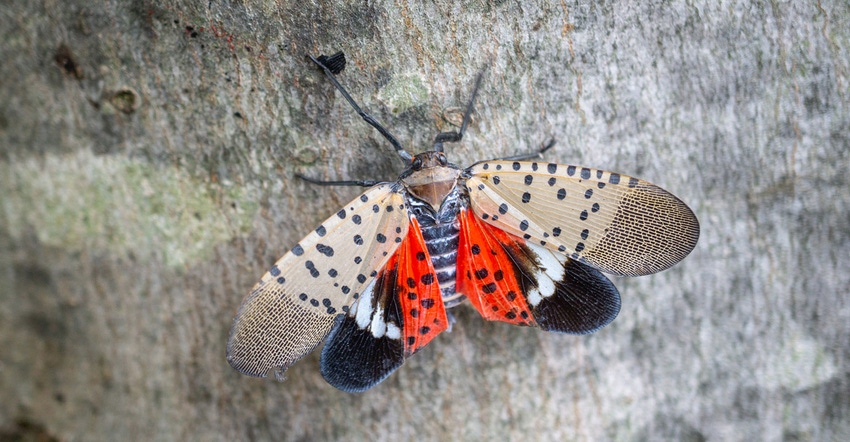
If it's not one invasive pest it's another. We've had our share of them over the years and they'll probably keep on coming. Most of the earlier invaders have become endemic and we have dealt with them any number of ways.
My favorite solutions have been the ones we organized like warfare – boll weevil, bollworms. For the most part, we have been able to manage pests at a level that we can control them.
But, there's always a new one that pops up.
One of the latest pests that is really causing some concerns in agricultural circles is the spotted lanternfly, Lycorma delicatula. You know it's bad when even environmentalists tell you to kill it anyway you can.
Note: They have not been found in the Midsouth, so please don't panic. But be aware.
It's a beautiful bug – instar nymphs are black with crimson. White spots speckle their legs and bodies. The adults have black heads and wings with black spots. A second set of wings that sit under the more drab speckled wings are black and white with a splash of crimson. They are about ¾ of an inch long.
But beauty belies their devastation. They can wreak havoc on a wide range of fruit, ornamental and woody trees. Grape growers are especially concerned because they can cause major damage to vineyards.
The flies feed on plant sap. They excrete honeydew – a lot of it - which encourages the growth of molds and� can infect the plant, eventually killing it.
They are planthoppers, so in addition to flying, they can hop great distances – a nightmare for bug-a-phobes.
Native to China, the lanternfly first popped up in Pennsylvania and has spread to Connecticut, Delaware, Indiana, Maryland, New Jersey, New York, Ohio, Virginia, and West Virginia. Single dead insects have been collected in other states – not the Midsouth - but at this point there have been no signs of infestation outside of the Northeast.
Most states where the insect has appeared have special state specific reporting guidelines but most U.S. states are considered at risk.
The spotted lanternfly is spread mostly by transport so travelers need to inspect for the pest if they have been in an infected area. Vehicles, trailers, and even clothes need to be checked because anyone can accidently move spotted lanternfly.
They tend to mass as instar nymphs and as adults so they are fairly easy to spot. The white spots on the nymphs and black spots on the adults are key to identification.
They are seasonal pests and the adults usually begin showing up in early summer. They lay several vertical rows of eggs about an inch long and cover them with a grey waxy covering. The eggs over winter on the sides of trees and the nymphs emerge in the spring.
Spotted lanternflies may not be murder hornets, but they warrant a watchful eye.
About the Author(s)
You May Also Like






